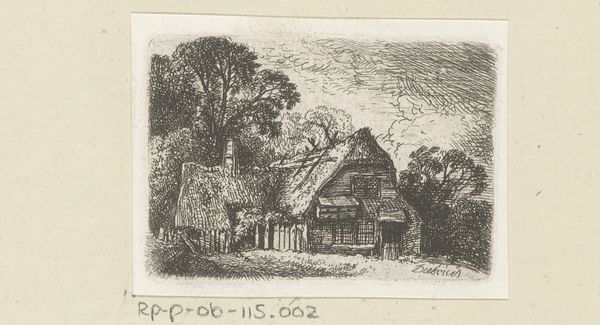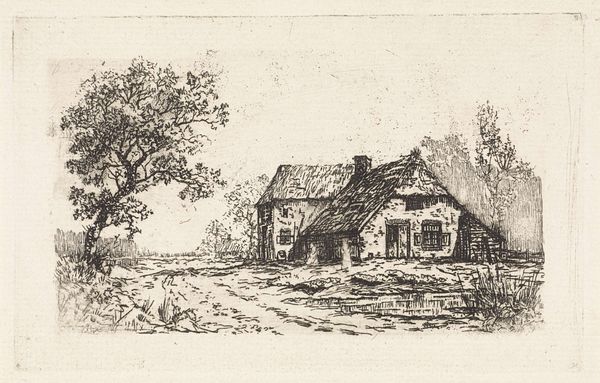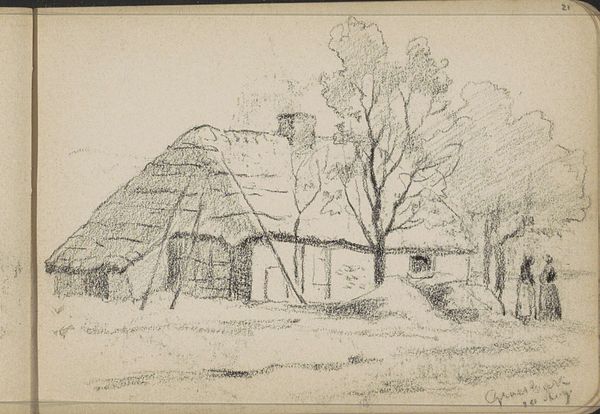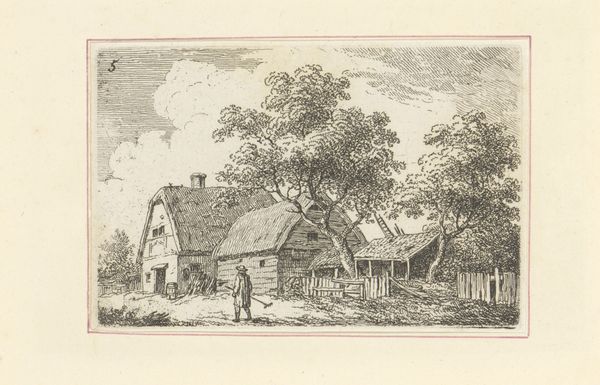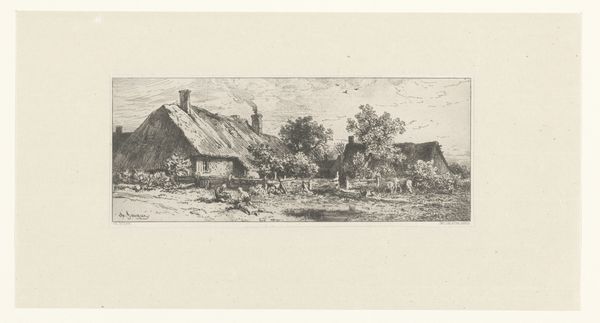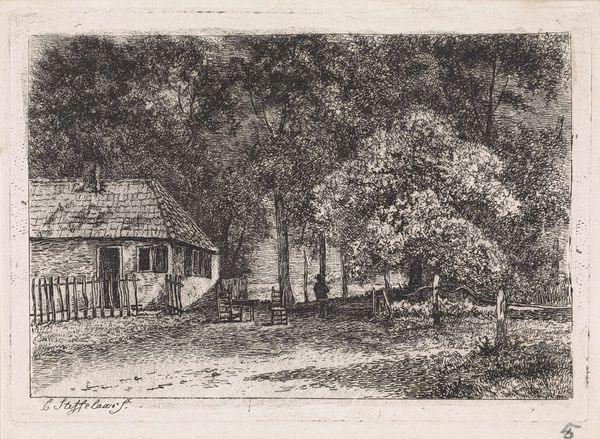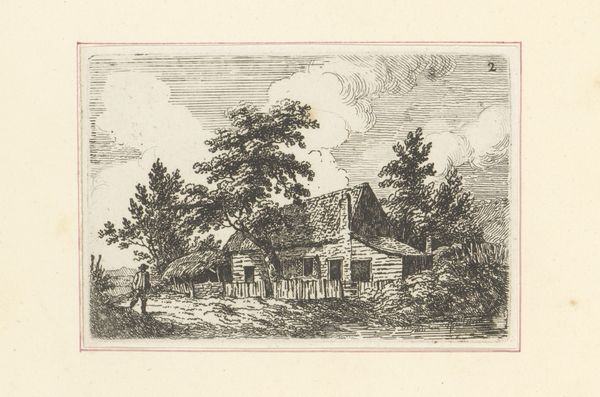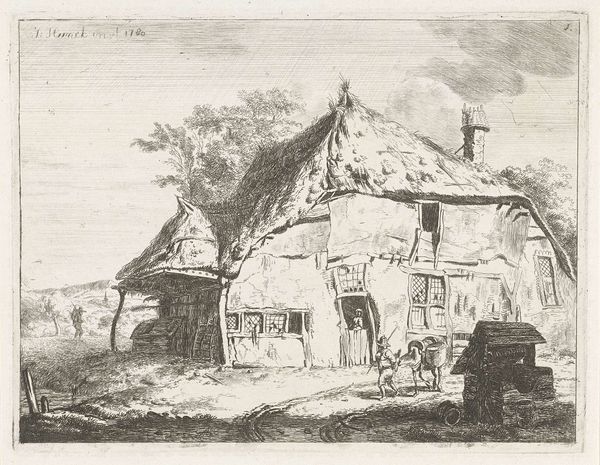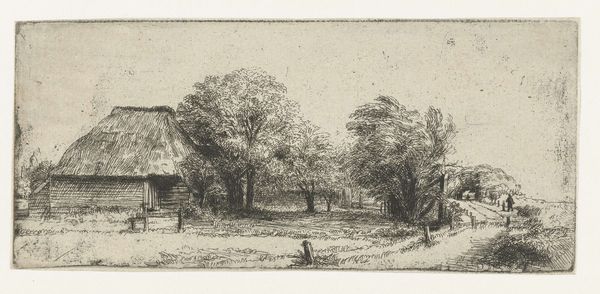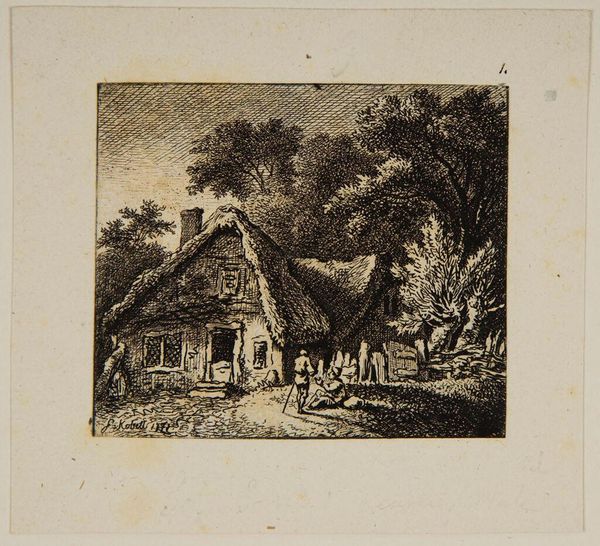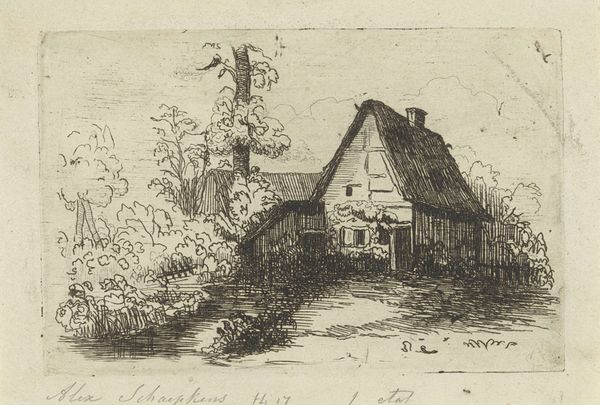
drawing, print, etching
#
drawing
#
baroque
# print
#
etching
#
landscape
#
genre-painting
Dimensions: height 50 mm, width 71 mm
Copyright: Rijks Museum: Open Domain
Editor: This is "Landschap met boerderij," or "Landscape with Farmhouse," an etching made sometime between 1722 and 1774 by Christian Wilhelm Ernst Dietrich. I'm immediately drawn to how the intricate etching creates such a cozy, almost nostalgic feeling. What stands out to you about it? Curator: Well, considering Dietrich's context, we see this work participating in a broader market for genre scenes. Landscapes at this time weren't just about pretty views; they often served a social function, idealizing rural life. Does this idealized image of the countryside match up with the realities of agrarian life at the time, do you think? Editor: That's interesting! It does feel romanticized. I mean, the farmhouse looks charming, not like a place of hard labor. Were these prints primarily for city dwellers longing for a simpler life, then? Curator: Exactly. The urban elite were increasingly detached from rural realities, and these images catered to a certain nostalgia, reinforcing a social hierarchy. How do you think the artist uses visual elements, like composition, to construct this specific image of rural life? Editor: The composition does seem key. The farmhouse is centrally located and detailed, suggesting importance and serenity. I guess focusing on that picturesque view, while excluding details about labor, creates a story. Curator: Precisely. The way the art market functions greatly shaped these kinds of representations, perpetuating specific narratives about country life and who had access to it. Did that change your perception of the artwork? Editor: Absolutely. Seeing it as part of a social and economic landscape gives it so much more depth than just an image of a building and a landscape. I now appreciate how the landscape genre participated in shaping particular ideals!
Comments
No comments
Be the first to comment and join the conversation on the ultimate creative platform.
